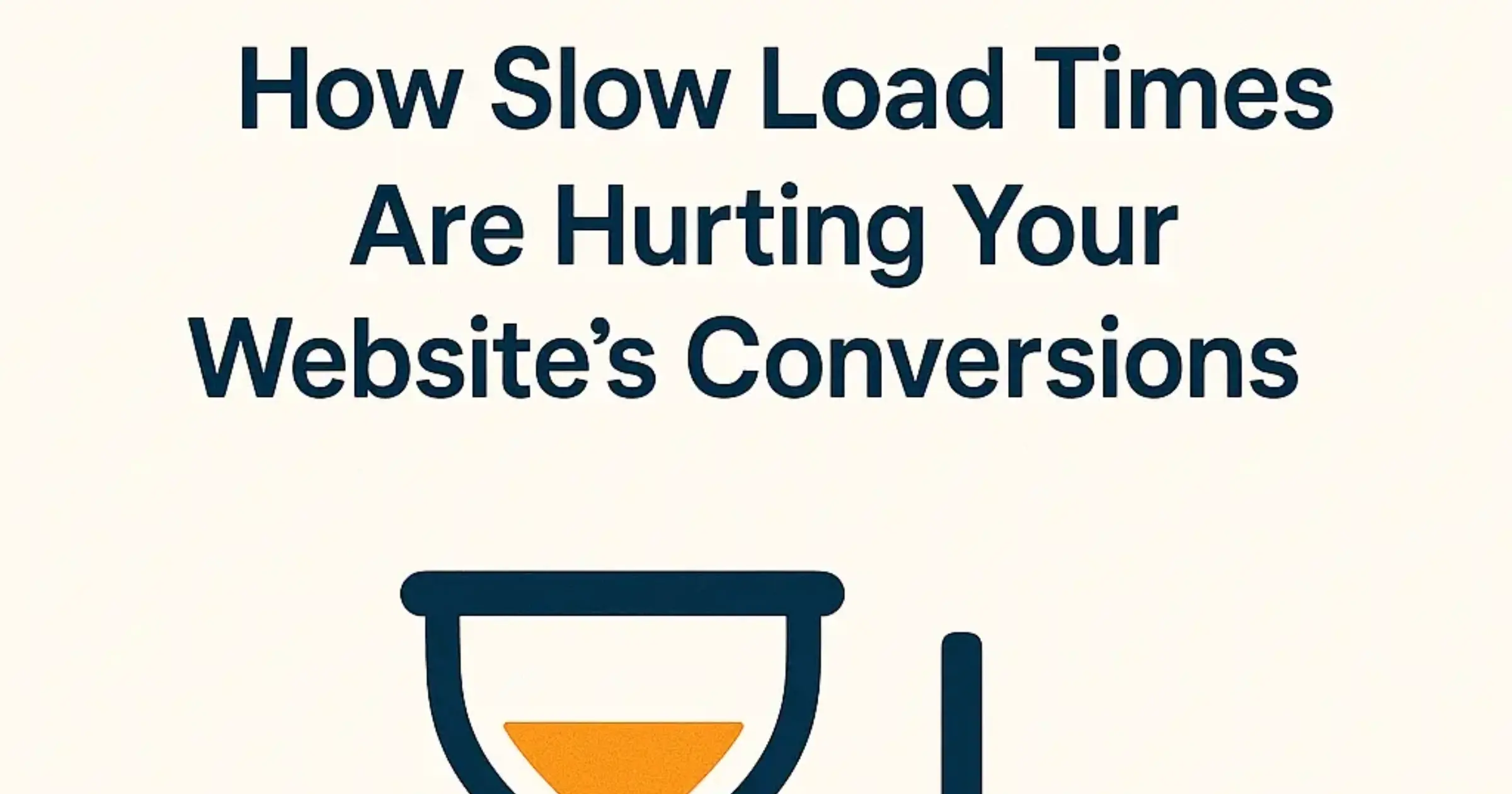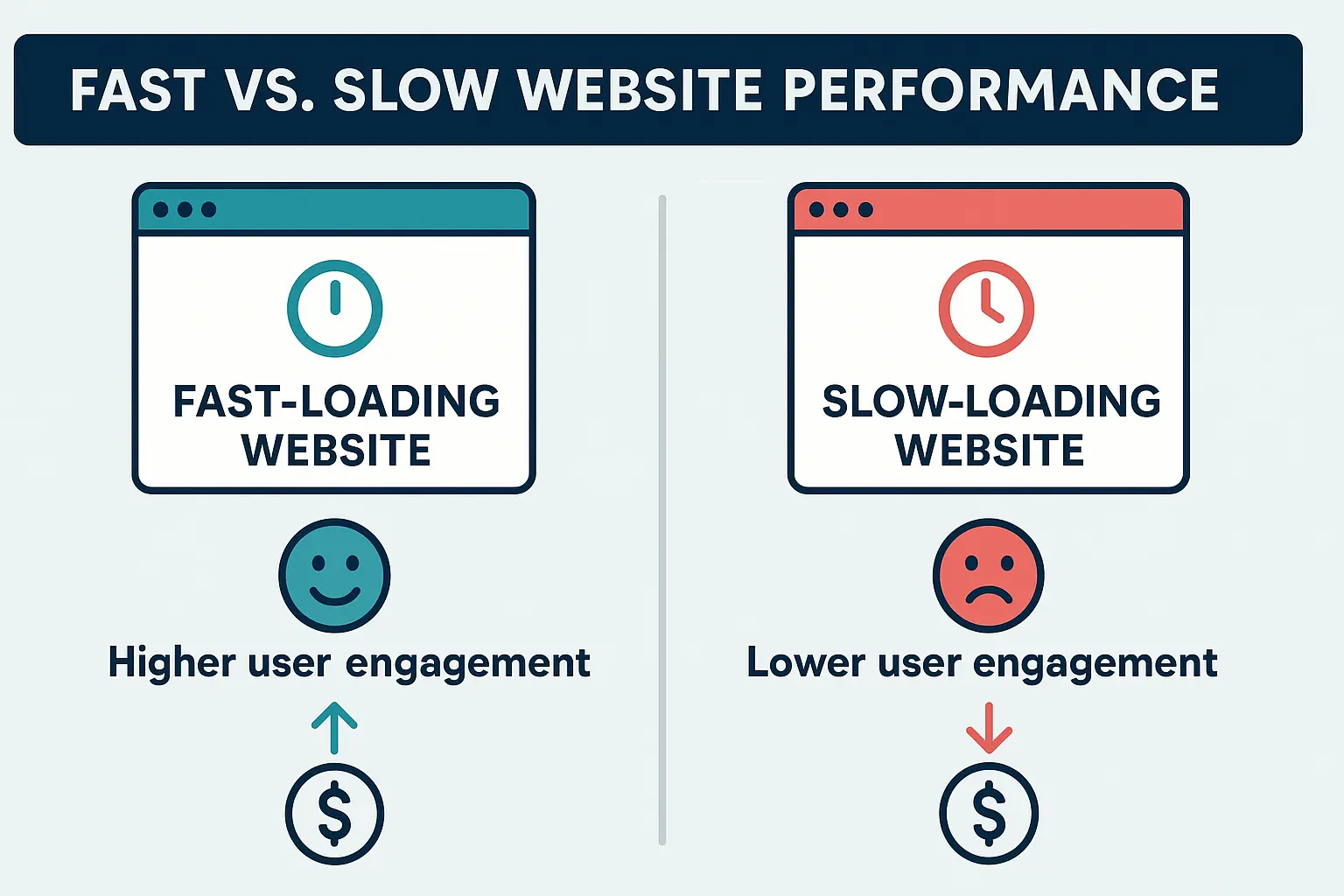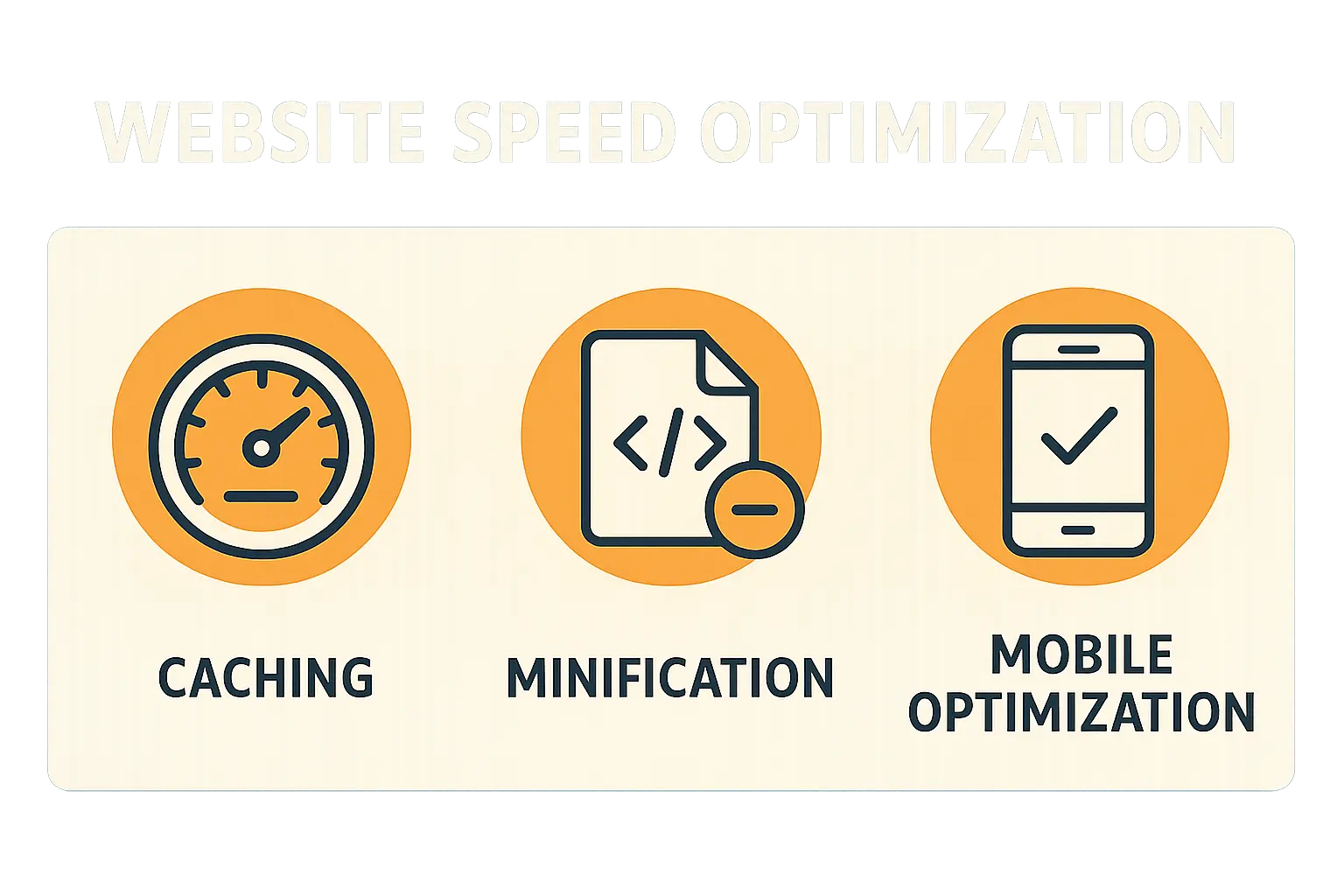
How Slow Load Times Are Hurting Your Website’s Conversions
Uncover the hidden costs of sluggish load times and discover actionable insights to boost your website's performance and conversion rates.
In today’s digital landscape, every second counts. Did you know that even a one-second delay in page load time can reduce conversions by up to 7%? This stark reality isn’t just a statistic—it’s a wake-up call for businesses striving to capture and retain online customers. As user expectations rise and competition intensifies, ensuring your website loads quickly is no longer optional; it’s essential.
This post dives into the intricate relationship between website performance and conversion rates. Here, you’ll discover why speed matters more than ever, the consequences of a slow-loading site, and an overview of actionable strategies that can transform your online presence. Whether you’re an e-commerce giant or a local business, understanding these dynamics is key to thriving in a fast-paced market.
The challenge is clear: modern users demand seamless, instantaneous experiences. Slow load times not only frustrate visitors but also erode trust and lead to significant revenue losses. With increasing competition, a website that dawdles in delivering content will quickly fall behind.
At Sitalyze, we understand that website performance is the backbone of digital success. Our AI-powered analysis tool delivers a comprehensive 30-page report covering over 50 critical metrics—from SEO and performance to the conversion funnel. This deep-dive analysis equips businesses with the precise data needed to pinpoint issues and optimize every aspect of their online presence.
Beyond our approach, several reputable platforms emphasize the importance of speed in website performance. Tools like Google PageSpeed Insights, GTmetrix, and Pingdom offer valuable benchmarks and insights that can further guide your optimization efforts. By integrating these resources with the in-depth reporting of Sitalyze, businesses can build a robust strategy to overcome the pitfalls of slow load times and drive higher conversion rates.
Unpacking the Mechanics of Slow Load Times
When you slow down a website, you’re not just delaying content—you're disrupting the entire digital experience. A host of interconnected factors come into play, making even small delays detrimental.
Impact on User Behavior and Engagement
Every extra second a page takes to load can lead to a cascade of negative outcomes:
- Increased Bounce Rates: Users often abandon a site when faced with delays, meaning lost opportunities.
- Reduced Engagement: A slow page discourages users from exploring further, limiting interaction and time on site.
- Perception of Low Quality: Users equate speed with reliability; a lagging website may appear unprofessional.

Deconstructing the Conversion Funnel
A slow website affects every step of the conversion funnel:
- Awareness: Potential visitors may never see your content if pages load too slowly.
- Consideration: Prolonged load times interrupt the user’s journey, reducing the likelihood they’ll delve deeper into your offerings.
- Decision: Even if interest is piqued, sluggish performance can deter final conversion actions, like making a purchase or signing up.
Imagine a flowchart that maps out each stage of the conversion funnel, clearly highlighting the points where delays cause significant drop-offs. This visual aid emphasizes how a single hiccup in load time can have a cascading effect on your overall conversion strategy.
How Sitalyze Identifies and Addresses Speed Issues
Sitalyze provides a detailed, 30-page report that not only diagnoses website speed issues but also offers personalized solutions:
- Comprehensive Metrics: From Time to First Byte (TTFB) to fully rendered content, every aspect of load performance is analyzed.
- SEO & UX Insights: The tool pinpoints how slow speeds affect search engine rankings and overall user satisfaction.
- Actionable Recommendations: Sitalyze doesn’t just highlight problems—it provides step-by-step advice on how to fix them.
Step-by-Step Process:
- Data Collection: Aggregates data across more than 50 metrics to paint a full picture of your website’s performance.
- In-Depth Analysis: Utilizes AI to interpret the data and identify specific bottlenecks.
- Tailored Reporting: Generates personalized recommendations to streamline site performance, aligning technical improvements with business goals.
By integrating insights from industry-standard tools like Google PageSpeed Insights and GTmetrix, Sitalyze ensures that your optimization efforts are both comprehensive and actionable.

Real-World Success Stories and Data-Driven Insights
Understanding the theory is crucial, but real-world examples are what truly bring these concepts to life. Let’s explore how businesses have transformed their conversion rates by addressing slow load times.
A Tale of Two Websites
Consider an online retailer that was once plagued by slow load times, resulting in a 30% bounce rate on key landing pages. After implementing a series of optimizations recommended by Sitalyze and monitoring performance through Pingdom, the retailer experienced a dramatic turnaround:
- Before Optimization: High bounce rates and poor user engagement resulted in low conversion rates.
- After Optimization: A 40% reduction in load times led to a 25% increase in conversions, as users enjoyed a smoother, faster browsing experience.
This case exemplifies how addressing performance issues can directly translate into improved customer retention and increased revenue.
Data That Speaks Volumes
Sitalyze’s detailed reports provide quantifiable insights that help businesses measure the impact of their optimizations:
- Load Time Improvements: Data shows significant reductions in page load times correlated with decreased bounce rates.
- Enhanced User Engagement: Improved speed leads to longer session durations and more pages viewed per visit.
- Conversion Rate Boosts: Streamlined performance directly contributes to higher conversion rates.
For a closer look at how these metrics interplay, our sample report offers a deep dive into the numbers behind a successful website optimization strategy.
Leveraging Industry Resources
Several trusted platforms can further validate your efforts:
- Google PageSpeed Insights: Provides a detailed analysis of your website's performance and actionable tips.
- GTmetrix: Breaks down load times and performance issues, offering a granular look at website speed.
- Pingdom: Monitors real-time performance and uptime, ensuring that optimizations deliver continuous improvements.
These resources, when used alongside Sitalyze’s exhaustive analysis, equip businesses with everything they need to turn slow load times into a competitive advantage.
Tips and Best Practices for Website Speed Optimization
Actionable Advice to Supercharge Your Site
- Optimize Your Images: Compress images and use next-gen formats to reduce file sizes without sacrificing quality.
- Enable Browser Caching: Leverage caching mechanisms so returning visitors experience faster load times.
- Minify Code: Remove unnecessary characters from HTML, CSS, and JavaScript files to streamline your site.
- Adopt a Content Delivery Network (CDN): Distribute your content globally, reducing latency for users across different regions.
- Regular Performance Audits: Use tools like Google PageSpeed Insights, GTmetrix, and Pingdom to monitor and optimize your website’s speed.
- Leverage Sitalyze Reports: Our detailed 30-page reports provide actionable insights across over 50 metrics, pinpointing exact areas for improvement.
Dos and Don’ts
Do:
- Conduct Routine Audits: Frequent performance checks help catch and resolve issues before they impact user experience.
- Test Across Devices: Ensure your website performs consistently on mobile, tablet, and desktop.
- Utilize Industry Tools: In addition to Sitalyze, complement your strategy with insights from established platforms like Google PageSpeed Insights and GTmetrix.
Don’t:
- Ignore User Feedback: Pay attention to user complaints about speed, as they often highlight hidden performance issues.
- Overlook Mobile Optimization: With increasing mobile traffic, ensure that your website is optimized for smaller screens and slower connections.
- Assume One Solution Fits All: Each website is unique. Tailor your optimization strategy to your specific performance data and user behavior.

By following these actionable tips and best practices, you can significantly improve your website’s performance, ultimately leading to enhanced user satisfaction and higher conversion rates.
Wrapping It Up: The Road to Faster Conversions
The journey towards a faster website is both technical and strategic. In this post, we explored the adverse effects of slow load times on user engagement and conversions, examined how Sitalyze’s comprehensive reports diagnose and address these issues, and shared actionable tips to keep your website at peak performance.
Recap and Final Thoughts
- Key Takeaway: Website speed is not just a technical metric—it’s a critical factor that directly impacts user experience and conversion rates.
- The Sitalyze Advantage: Our AI-powered analysis provides an in-depth, 30-page report that evaluates over 50 performance metrics, offering personalized recommendations to optimize your site.
- Next Steps: Start with a detailed performance audit using Sitalyze, integrate best practices from our tips, and validate improvements with tools like Google PageSpeed Insights and GTmetrix.
In today’s competitive digital landscape, every millisecond matters. Prioritizing speed is a proven strategy to boost customer satisfaction and drive higher conversions.
Call to Action
Discover how Sitalyze can transform your website’s performance. Visit our homepage or get in touch via our contact page to learn more, share your experiences, or start your journey towards a faster, more efficient website.